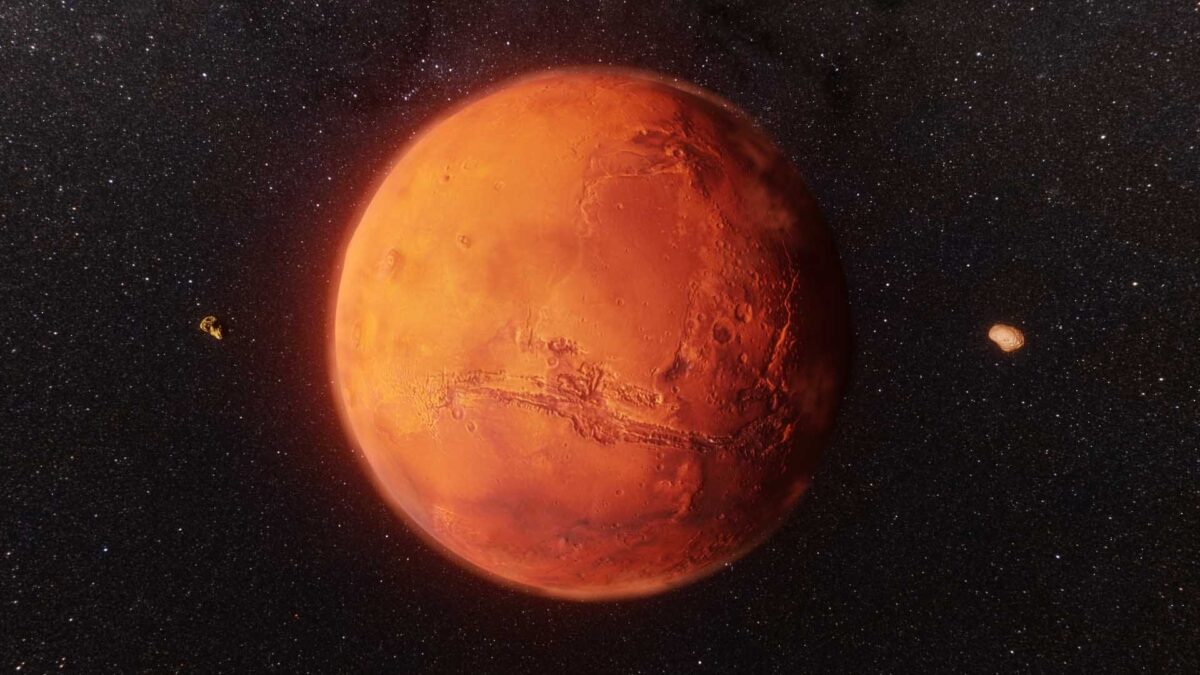There has been a discovery on Mars. Three new craters are found by a team of researchers and scientists in Ahmedabad’s Physical Research Laboratory (PRL).
Table of Contents
WHERE ARE THE CRATERS?
On the Red Planet, these crates are located in the Tharsis volcanic region. This is the region close to the equator of the planet.
A massive volcano is situated in this particular region. The Olympus Mons Volcano is three times the height of Mount Everest. The area is known to be the hottest, yet ice frosts are found on top of the volcano. The frost exists in a cycle. The cycle happens daily around the time of sunrise and then the frost evaporates due to heat.
CRATERS
The three craters are namely: Lal Crater, the Mursan Crater, and the Hilsa Crater.
Finalizing and approving these names was done by the International Astronomical Union’s (IAU) group of Planetary System Nomenclature. IAU is a non-governmental organization with the aim of advancement of astronomy.
Late Prof. Devendra Lal has played an important role in naming these craters. He was one of the Directors of the PRL. His contributions as a planetary scientist and cosmic ray physicist have changed the trajectory of science.
To honor Prof. Lal, one crater is named Lal Crater. The other two craters are after the two cities of Uttar Pradesh and Bihar.
LAL CRATER
This crater is located at -20.98°, and 209.34°, the area spreads up to 65 km.
MUSRAN CRATER
Named after a city in Uttar Pradesh, part of the Hathras district. Musran is the birthplace of the current Director of PRL, Dr. Anil Bharadwaj.
It is located at -20.90° and -21.09°. Across the area of 10 km.
HILSA CRATER
This is located 10 km to the west of the Lal crater. It is situated at -20.91°, -21.14°. The center of this crater is at the longitude of 208.67°.
Hilsa is a city in Bihar, a sub-district of Nalanda district. It is the birthplace of Dr. Rajeev Bharti. One of the scientists who was part of the team who discovered these craters.
IMPORTANCE OF THIS DISCOVERY
As we now know, the Tharsis Volacnic region is blessed with the presence of lava. But new information contrary to this fact is being brought to light by NASA. On the Mars Reconnaissance Orbiter (MRO), the shallow radar instrument (SHARAD) measures the strength of the return wave from below the surface of Mars. The results from the same tell us about the presence of a 45-meter-deep layer of rock below the surface of the volcanic region.
This proves that a long time back, water did flow across the Martin surface. The sediment deposits from the same have given formation to the now-known Lal crater.
The other two craters are also a result of a timely process including the flow and presence of water.
This discovery has given us a deeper understanding of Mars and its formation. This discovery, being made in Ahmedabad has made all Indians proud and has increased their trust in the Indian Space agencies.



